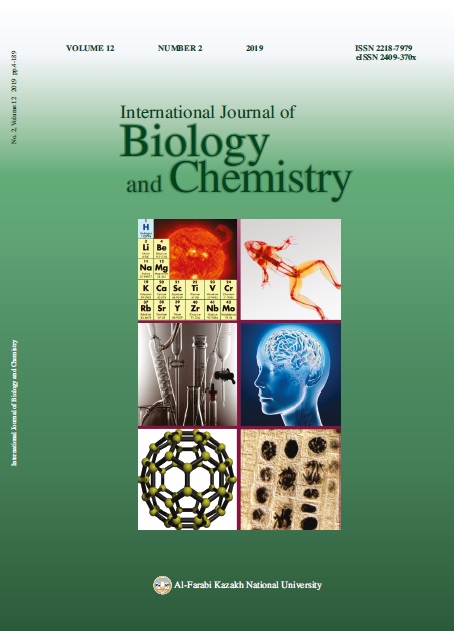Species of uranium of the Kamyshanovskoe deposit (Kyrgyzstan)
DOI:
https://doi.org/10.26577/ijbch-2019-i2-15Abstract
On the territory of Southern Kazakhstan and its adjacent territory of Kyrgyzstan, there is a unique world-wide Betpakdala-Shu-Ili Province, where up to 15% of the world uranium reserves are concentrated. Technological work on the extraction and processing of uranium ores in these deposits began in the middle of the last century, while until the mid-80s mining was carried out by mining in mines and open pits, and from the mid-80s the method of sulfuric acid leaching was used.
Object of this investigation is Kamyshanovskoe uranium deposit, which is located on the territory of Republic of Kyrgyzstan (about 22 km of its capital – Bishkek city). The natural gamma-emitted radionuclides were determined by gamma-spectrometry measurements (“Ortec” HPGe detector) in a core sample collected from the Kamyshanovskoe uranium peat deposit (0-37 cm depth). The results show U isotopes concentration peak at 12 cm, while the concentrations of its progenies are roughly constant down the profile. Thermo-gravimetry analysis (NETZSCH STA 449 F3A–0372–M) showed, the main part of potentially mobile phases (organic matter, clay and carbonates) was located at the surface.
Solid speciation of uranium has been examined in peat samples collected at the Kamyshanovskoe deposit using sequential extraction. Sequential extraction was carried out using the protocol employed by A.Tessier and et al. In all filtrates natural uranium isotopes were measured by a high resolution alpha-spectrometer (“Alpha-analyst”, Canberra) after appropriate radiochemical preparation, consisting of extraction by 30% tributyl phosphate in toluene and electrodeposition on a steel disk with a mixture of 25% solution of ammonium chloride and saturated solution of ammonium acetate as electrolyte solution. Sequential extraction of peat samples clearly showed that most of uranium is in reversibly bound fractions obtained
by treatment with ammonium acetate, hydroxylamine with hydrochloric acid and distilled water, indicating high mobilization potential of uranium in this peat.
Downloads
How to Cite
Issue
Section
License
ааа





